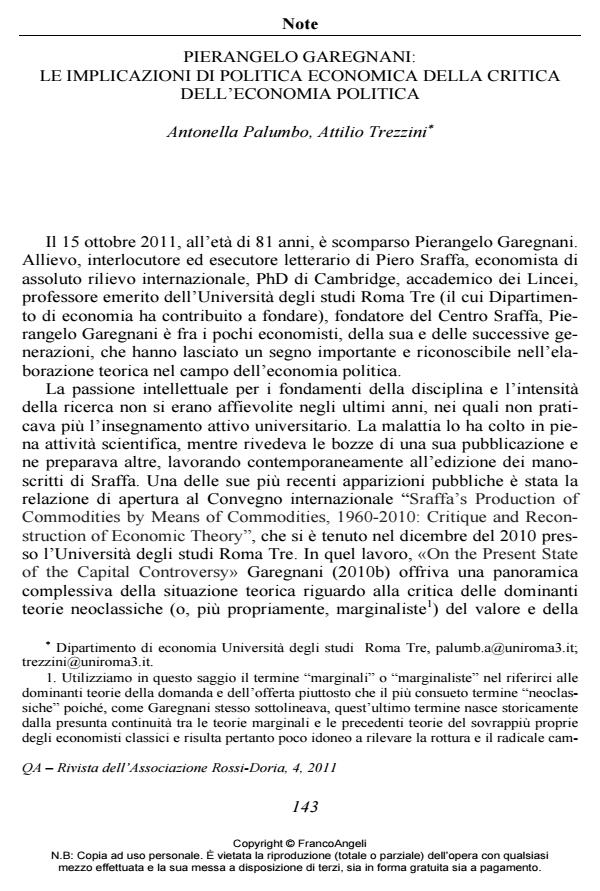Pierangelo Garegnani: le implicazioni di politica economica della critica dell’economia politica
Journal title QA Rivista dell’Associazione Rossi-Doria
Author/s Antonella Palumbo, Attilio Trezzini
Publishing Year 2011 Issue 2011/4 Language Italian
Pages 14 P. 143-156 File size 736 KB
DOI 10.3280/QU2011-004005
DOI is like a bar code for intellectual property: to have more infomation
click here
Below, you can see the article first page
If you want to buy this article in PDF format, you can do it, following the instructions to buy download credits

FrancoAngeli is member of Publishers International Linking Association, Inc (PILA), a not-for-profit association which run the CrossRef service enabling links to and from online scholarly content.
Pierangelo Garegnani: Policy Implications of the Critique of Political Economy Notwithstanding his fundamental contribution to the critique of the neoclassical notion of capital, we maintain that Pierangelo Garegnani’s research has been especially characterized by the reconstruction of an alternative approach to economics. Following Sraffa’s lead, Garegnani found such an alternative approach in the Classical theory of value and distribution, and put forward a Classical-Keynesian theory for output determination. In this approach, prices are not scarcity indexes, the absence of any spontaneous tendency to full employment abolishes optimality of market economies, income distribution results from social − not natural − forces. The policy implications of this approach are considered.
Keywords: Pierangelo Garegnani, Piero Sraffa, Capital theory, Classical surplus approach, Effective demand
Jel codes: B320, D300, D460, E110
- The modern Italian debate on the Walrasian theory of capitalization (1960-1971) Giovanni Michelagnoli, in HISTORY OF ECONOMIC THOUGHT AND POLICY 1/2021 pp.131
DOI: 10.3280/SPE2021-001006
Antonella Palumbo, Attilio Trezzini, Pierangelo Garegnani: le implicazioni di politica economica della critica dell’economia politica in "QA Rivista dell’Associazione Rossi-Doria" 4/2011, pp 143-156, DOI: 10.3280/QU2011-004005